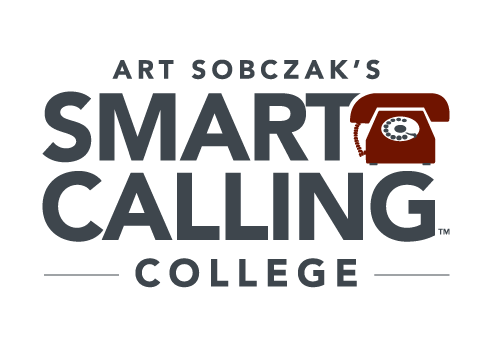
 "Join me at the only public training workshop I'm doing this Spring/Summer. I'll work with you on your successful sales/prospecting call."
"Join me at the only public training workshop I'm doing this Spring/Summer. I'll work with you on your successful sales/prospecting call."
-Art
Agenda - What You'll Learn at the Program
This is a sales and prospecting program focusing on talking to decision makers. We will go into using LinkedIn--a necessity in b2b sales--and using email to complement your efforts, but again, the most effective way to sell is by speaking with people. This program will help you do that more often, and more effectively.
We go step-by-step through the logical process of the sales call, where you are building each component of your successful call. This is not theory. It is the what-to-say messaging that you use to get prospects and customers to engage, and take action.
Here are the modules you will go through. Each will have its own activities and exercises.
Your Pre-Call Planning
- Defining why people would be interested in talking to, and buying from you. (This will be the basis for the interest-creating messaging you'll use in your emails, voice mails, and in your openings)
- Creating your Possible Value Statements, which are the actual words you'll use to create interest and avoid resistance
- What, where, why and how to gather the intelligence that will make your calls Smart, personalized, tailored, and relevant. This ensures you don't sound like the typical cheesy salesperson or cold calling telemarketer. We will also cover what you need to do and avoid on LinkedIn.
- What to do before your calls to ensure you’re never rejected again
- How to set specific objectives that guide you on the successful call (along with examples)
Pre-Buyer Conversations
- How to identify and locate not just the buyer, but all the key people involved in influencing what you sell.
- Secrets of collecting valuable, real-time, internal sales intelligence before you reach your decision maker to make your calls "smart," and therefore relevant and interesting.
- How to get screeners on your side in helping you sell to the boss (this contradicts what many “experts” say, but it works).
- How to create and deliver voice mail messages that get listened to, and responded to
- What NOT to say to screeners (and on voice mail) which is sure to categorize you as a “typical time-wasting salesperson.”
- Word-for-word examples of interest-creating messages.
“Sounding” for Success
- How to sound the way you want to “look” over the phone so your voice enhances your message, and not detract from it.
- What to do to avoid annoying “uhh” and other filler habits.
Opening Statements That Create Interest—Not Resistance
- 20 call-killing examples of what to never say during the first 30 seconds of the call, mistakes that most callers don't even realize are hurting them
- Proven formulas, templates, and tons of word-for-word examples of prospecting, account management, follow-up, and inactive account opening statements to use as-is or modify.
- How to deliver value on every call, and avoiding the "just checking in," "touching base," and "wanted to see if you got my email" calls.
- How to respond to the "I'm not interested" and other early resistant reflex responses
- On the follow-up webinar we will do reviews and makeovers of attendee's actual openings
"Art presents his techniques in a casual setting that allows creativity and dialogue, without putting you on the spot. His techniques for the all important opening are terrific! They gave me the ability to get to decision makers and close the sale. Take this class if you want to have your best year yet!"
Barry Renstrom, MeadWestVaco
Helping People Buy Through Questioning
- How to plan the questioning strategy that will help you identify their needs, pains, problems, concerns and desires, and put them in the frame of mind to want to hear what you have.
- Why many of your “benefits” might be liabilities, and how to use the “Question Generator” to create the questions to uncover the precise info you need, and then your subsequent questions and responses
- There are such things as dumb questions in sales; examples, and how to avoid them.
- How to question at the "advanced" level
- How to get even the most closed-minded people to open up
- How to question conversationally, and not have it sound like a survey or interrogation
Listening: Much More Important Than Talking
- The one word that can help you become an exceptional listener.
- What you need to do all of the time to listen at the highest level, and the two points where you need to do it in the communications process
Sales Messages
- How to talk less during a presentation—and sell more.
- How to ensure you’re only presenting what they’re interested in.
- The four-step process for presenting exactly what they want to hear in order to buy, or meet with you
- How to get them to "write your presentation" for you
- How to maximize value so price is not an issue later.
- How to build urgency into your recommendation.
- How to pre-empt objections before they occur.
Asking For, and Getting Commitment (Closing)
- How to move every call forward with commitments
- Adopting the "asking" mindset
- Specific commitment/closing questions you can use and modify.
- When asking for commitment is pushy, when it’s not.
- How to ask for larger sales and commitments, more often, successfully, with more confidence! (Could just one successful "ask" pay for your investment in this entire program?"
Answering Problems and Questions (Objections)
- Why objections are feared by most people—except by you after this module.
- Why people will never change their mind with typical salesy scripted objection rebuttals
- The only way to get someone to change their mind, which is conversational and collaborative
- Working on the “Objection Autopsy” so you can comfortably and confidently address every objection you hear.
- How to deal with objections in a conversational, non-adversarial way.
How to Set Up the Next Action, and What to Say on the Follow-Up Call
- How to set up your next contact so you have something more intelligent to say than, “Well, didja get the material I sent?” and, “Any questions?”
- Getting prospects and customers to do homework to ensure they're committed.
- How to ensure they actually read the information and evaluate the samples you send.
Setting real phone appointments that they are serious about. - Setting up longer-term follow ups with prospects who don't buy today, but could in the future
Beating Call Reluctance and Building Self-Motivation
- Overcoming any fear of picking up the phone or speaking to buyers
- How to remove self-imposed limitations, and set and stay committed to your goals
- Seven keys to minimizing and eliminating feelings of rejection
- Six ideas for building self-confidence
- How to get the motivational fires roaring so you are calling, and producing at a high level
Plus much, much more!